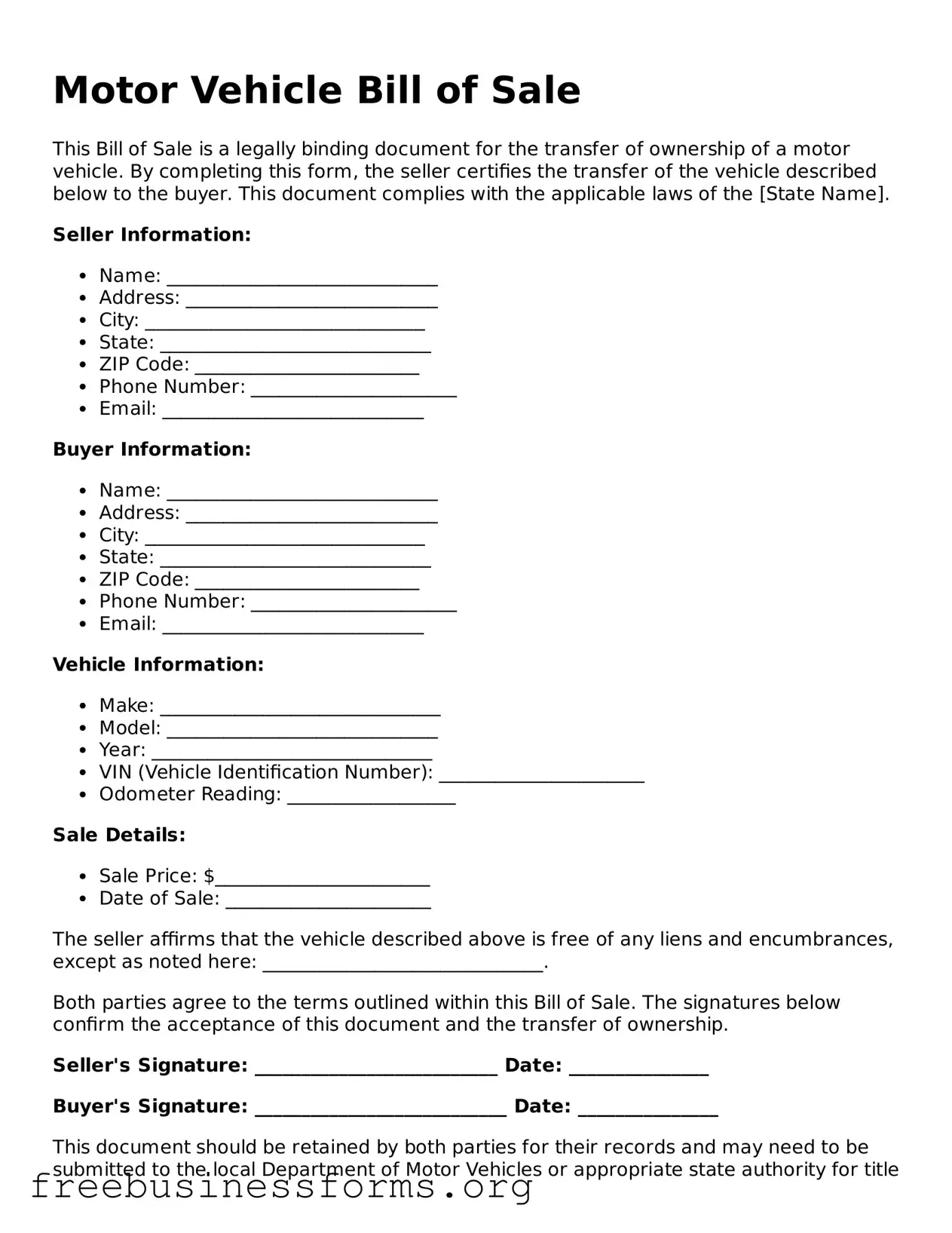Motor Vehicle Bill of Sale
This Bill of Sale is a legally binding document for the transfer of ownership of a motor vehicle. By completing this form, the seller certifies the transfer of the vehicle described below to the buyer. This document complies with the applicable laws of the [State Name].
Seller Information:
- Name: _____________________________
- Address: ___________________________
- City: ______________________________
- State: _____________________________
- ZIP Code: ________________________
- Phone Number: ______________________
- Email: ____________________________
Buyer Information:
- Name: _____________________________
- Address: ___________________________
- City: ______________________________
- State: _____________________________
- ZIP Code: ________________________
- Phone Number: ______________________
- Email: ____________________________
Vehicle Information:
- Make: ______________________________
- Model: _____________________________
- Year: ______________________________
- VIN (Vehicle Identification Number): ______________________
- Odometer Reading: __________________
Sale Details:
- Sale Price: $_______________________
- Date of Sale: ______________________
The seller affirms that the vehicle described above is free of any liens and encumbrances, except as noted here: ______________________________.
Both parties agree to the terms outlined within this Bill of Sale. The signatures below confirm the acceptance of this document and the transfer of ownership.
Seller's Signature: __________________________ Date: _______________
Buyer's Signature: ___________________________ Date: _______________
This document should be retained by both parties for their records and may need to be submitted to the local Department of Motor Vehicles or appropriate state authority for title transfer.
